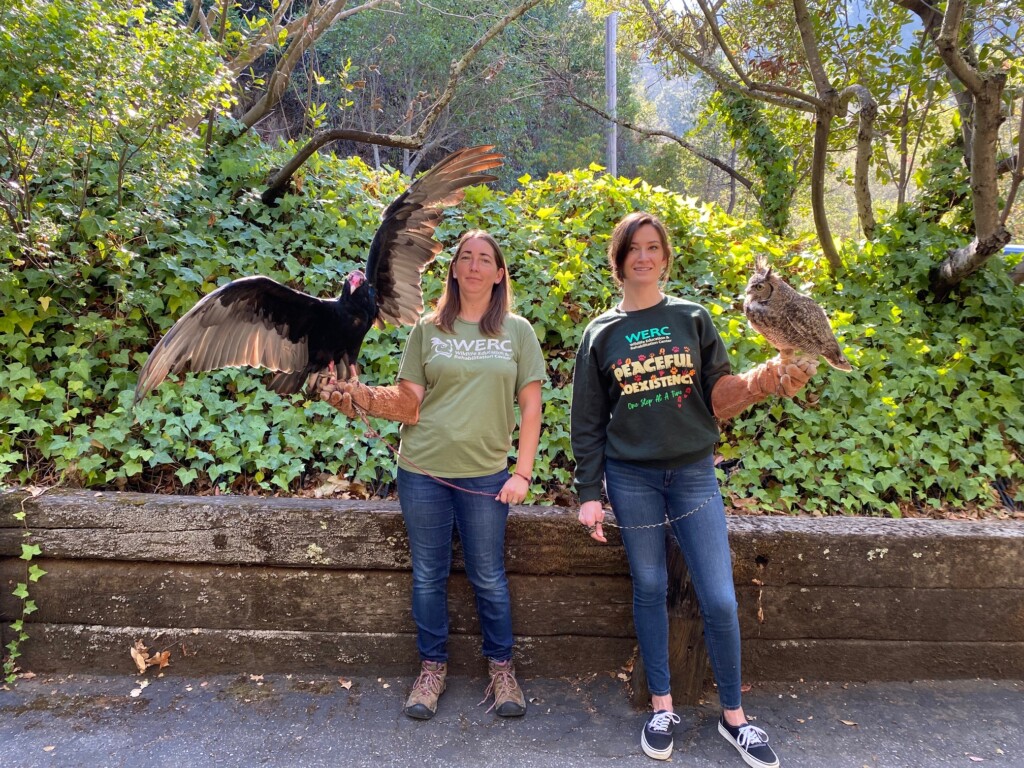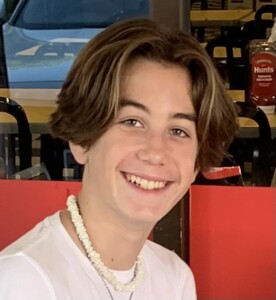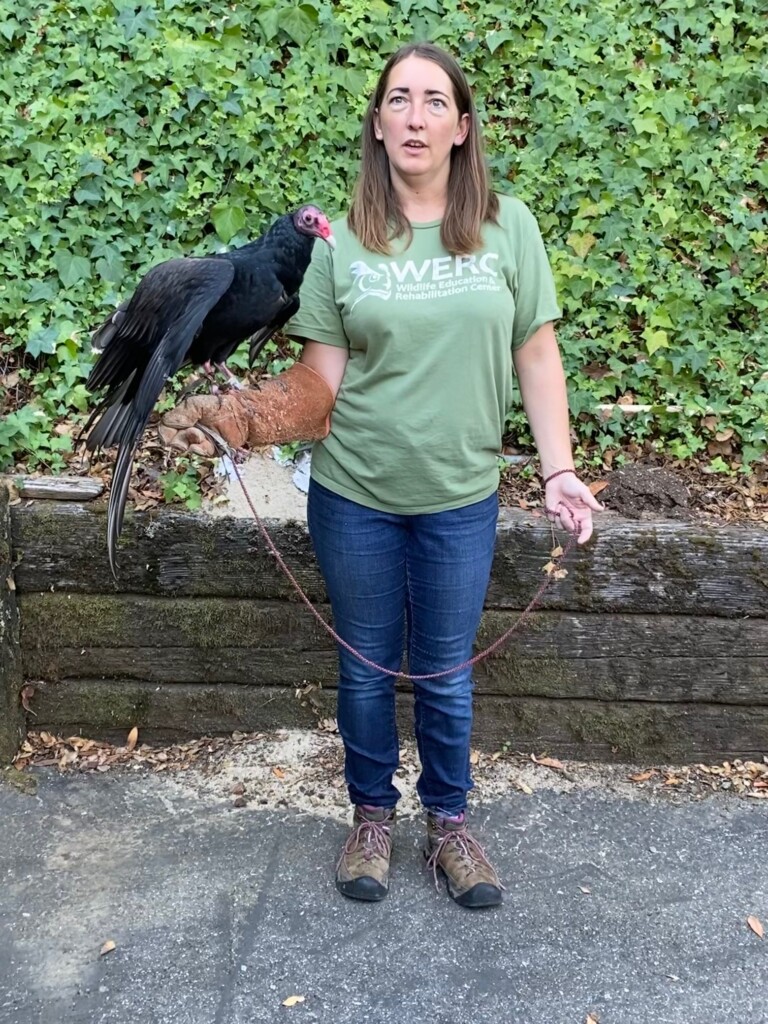Nonprofit profile: WERC strives to heal wild animals, educate public
Nonprofit rehabilitates injured South Valley wild animals
![]()

Photo courtesy Nolan Lyle
From left: Anna Pascual, WERC educational outreach coordinator, holding Zorro the turkey vulture, and Ashley Quick, WERC executive director, holding Luna the great horned owl.
By Nolan Lyle

Nolan Lyle
The word “raptor” in Latin means “to take by force.” The birds swoop down from the sky, snatching up their prey who don’t see them coming.
 Unfortunately, on occasion these magnificent birds might be injured after being struck by a car or other damaging occurrence. When this happens, they often are taken to the Wildlife Education Rehabilitation Center (WERC) site to recuperate. The nonprofit has a mission to help local wildlife — including the birds of prey such as turkey vultures and the great horned owl — recover from their wounds. The group also informs local residents about the variety of wild animals that make their home in the South Valley region.
Unfortunately, on occasion these magnificent birds might be injured after being struck by a car or other damaging occurrence. When this happens, they often are taken to the Wildlife Education Rehabilitation Center (WERC) site to recuperate. The nonprofit has a mission to help local wildlife — including the birds of prey such as turkey vultures and the great horned owl — recover from their wounds. The group also informs local residents about the variety of wild animals that make their home in the South Valley region.
Sue Howell founded WERC in 1990 after several years of volunteering at the Youth Science Institute in San Jose. For more than 30 years the center has been located on her property in Morgan Hill. She has devoted her life to the rehabilitation of native wildlife and the education of thousands of children.
“Our aim is to get the animals back into their natural habitat as soon as possible,” she said. “We are not interested in making pets of wild animals. The ones we have in our programs could not be returned to their habitat.”
 During the past 30-plus years, WERC has helped many animals from birds to bobcats. Every one of them has a story.
During the past 30-plus years, WERC has helped many animals from birds to bobcats. Every one of them has a story.
“There’s so many to choose from,” Howell said. “I’ve always enjoyed baby scrub jays, getting the eagles and the bobcats. We are very proud of the program created to raise them. But one of the most memorable is the educational gopher snake, Laz (short for Lazarus). We were not sure he would survive. Now 30 years later he is still here.”
Ashley Quick, the executive director of WERC, described how the group takes in all native species including songbirds, raptors, hawks, and opossums. WERC specializes in helping bobcat kittens, she said. The nonprofit is seeking a new and larger site to house its animal friends.
“When we expand, I would like to take more species like raccoons, coyotes and such,” Quick said. “We just don’t take them (here) because we don’t have the facilities.”
WERC volunteers are proud of the educational programs they offer the South Valley community. They include taking animals out to schools for children to see up close. The group also does outreach events or public community events such as the Tarantula Fest at Henry W. Coe State Park and the Taste of Morgan Hill in past years.
“Typically, that draws people in,” Quick said. “They’ll come and ask what the animals are, and we can educate them on what their species is, where they live, and how basically it’s a better coexistence with their local wildlife.”
WERC organizers encourage people who want to help the animals to contact them. Financial donations help provide for the dietary needs or the care that it takes to get the animals into the vet. They also have physical projects such as fixing their enclosures or building new enclosures.
WERC hopes its volunteers can educate residents on how humans impact the natural world and how they can make better choices to sustain the local environment.
“Education’s half the battle,” Quick said. “We’re educating people on how their choices will impact not only their lives but wildlife around them for future generations. We all live together and all our actions will leave impacts to others, be it negative or positive.”
Anna Pascual serves as WERC’s educational coordinator. One of her favorite activities is bringing animals to elementary schools so students can learn about native wildlife.
 “A lot of times people don’t really realize what animals live in their own backyard. Or, if they do see them, it’s usually at a far distance and they don’t quite understand them,” she said. “The goal by getting these animals out to students is they see they’re here, and they see what their role is in our ecosystem.”
“A lot of times people don’t really realize what animals live in their own backyard. Or, if they do see them, it’s usually at a far distance and they don’t quite understand them,” she said. “The goal by getting these animals out to students is they see they’re here, and they see what their role is in our ecosystem.”
When those kids get older and come across something like an opossum, they’re not going to have the same reaction of somebody who didn’t know what it was and might wish to hurt it, she said.
“Our goal by doing our educational programs is to help change minds,” she said. “We show why these animals are beneficial to have around and help try to discourage putting poisons out.”
WERC has two events coming up this month that will help in its mission to educate the public. Their popular annual benefit lunch fundraiser was held Saturday, Nov. 5, at Fortino Winery in Gilroy.
 The volunteers will also show off many birds at Raptor Fest, a family fun event Sunday, Nov. 19, at Rancho San Vicente in San Jose. They are part of a partnership with the Peninsula Open Space Trust, the host of this event.
The volunteers will also show off many birds at Raptor Fest, a family fun event Sunday, Nov. 19, at Rancho San Vicente in San Jose. They are part of a partnership with the Peninsula Open Space Trust, the host of this event.
“We’ll take our animals, mostly raptors, out to their open space,” Quick said.
By educating people at schools and nature-oriented events, the people at WERC can help residents understand how wild animals might live closer to them than they realize, Pascual said.
“Most people can go their entire life living in cities and not see a single wild animal,” she said. “But they’re there.”
Nolan Lyle is an eighth grader at Charter School of Morgan Hill. He wrote this story with assistance from Publisher Marty Cheek.
